Questions for Brian Holmes
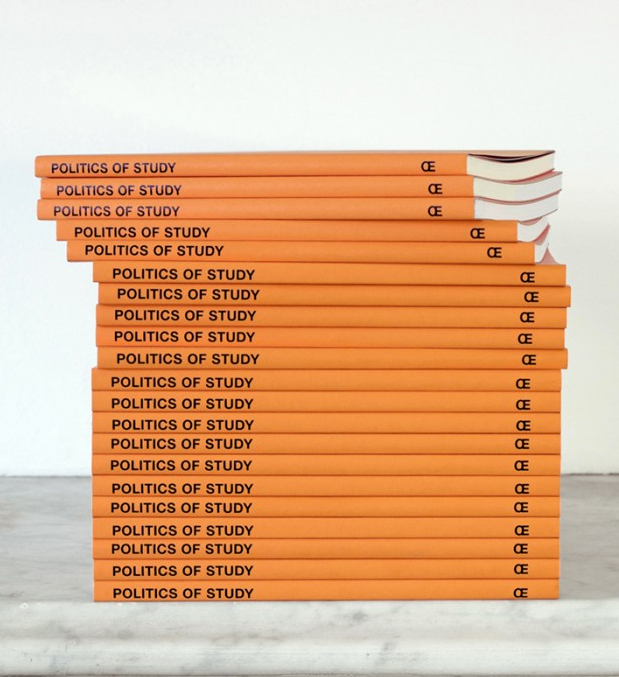
Interview by Tom Vandeputte and Sidsel Meineche Hansen (2015)
We’d like to ask you a series of questions that have to do with knowledge production, experimentation and learning in groups. First, what is your understanding of the crisis of academic institutions, considered in the light of your analysis of neoliberalism? And how do you see the possible role that academic institutions or self-organized forms of inquiry could play in this context?
It’s now obvious that neoliberal entrepreneurialism and the concept of investing in one’s own human capital through education have been the templates for a total makeover of academic institutions. On the one hand, the student becomes a client demanding personalized services in exchange for cash payments (or really, for loan transfers that mortgage his or her future); and on the other, the professor becomes a producer of intellectual property, exercising intellectual activity for a profit in which the university shares, and which soon becomes its raison d’être. After the Occupy movement, and as a part of its fundamental critiques, I retraced the way that this total makeover unfolded in the United States in a text called “Silence=Debt,” which you can easily find on the web. If you read that text to the end I think you’ll start seeing how far down this neoliberal pathway universities in Europe have gone on in the wake of the changes orchestrated by the Bologna Process. You may not have the same tuition levels, or student loan scams, or even the same structural incentives to produce intellectual property; but generally speaking, the old concepts of universal knowledge and maintenance of the democratic public sphere are being eroded, destroyed at the foundations and then cleared away, while some humanistic facade remains floating in the glow of the spectacle society. For the governing logic of the present, knowledge is a pure instrumentality bound to ownership rights, and education is a personal investment that has to cash out in the future. It would be useful to do this analysis of the neoliberal university in different European countries, without prejudging the results and without following some apocalyptic disaster script, but instead, just looking at what is actually going on in specific institutions.
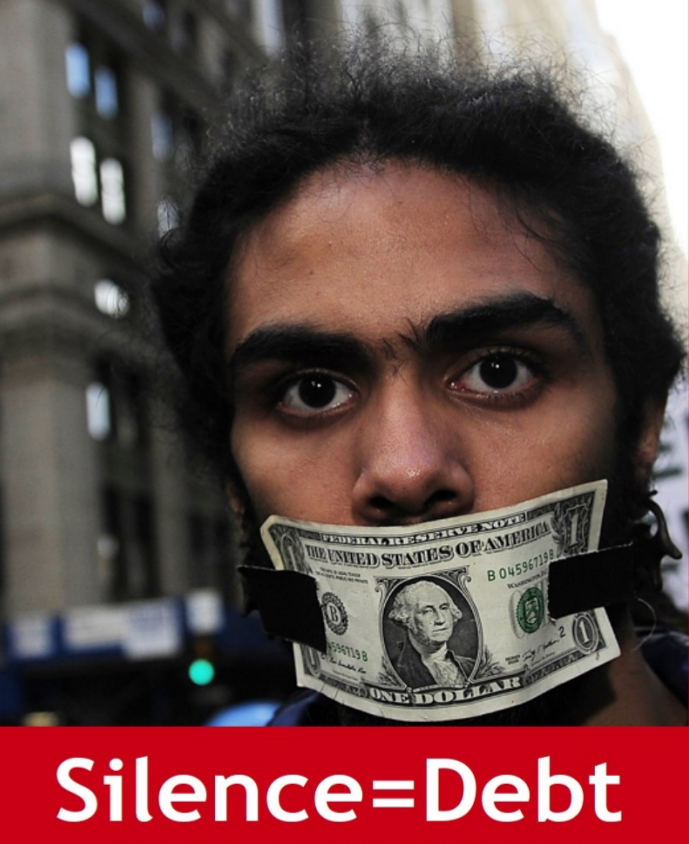 From my viewpoint, the really painful part of the story came after 2008 when we all realized that there were no alternative ideas with enough consistency to sketch out a substantially different form of governance at any scale, whether global, continental, national or even metropolitan. Warmed-over Keynesianism was the best that could be offered, at the nation-state level alone; and it was brushed aside. Alternatives further to the left are considered simply literary or metaphysical, they have no purchase on daily operations. After the most sweeping economic crisis since 1929 we still have the same basic policy packages, and worse, the same values and societal orientations that led not only to the economic crisis, but also to the acceleration of global warming. The only significant exceptions to this rule seem to be in Latin America. I think the lack of alternatives offers very strong testimony concerning the degree to which neoliberal concepts have reduced the range of both thinking and effective planning in today’s societies.
From my viewpoint, the really painful part of the story came after 2008 when we all realized that there were no alternative ideas with enough consistency to sketch out a substantially different form of governance at any scale, whether global, continental, national or even metropolitan. Warmed-over Keynesianism was the best that could be offered, at the nation-state level alone; and it was brushed aside. Alternatives further to the left are considered simply literary or metaphysical, they have no purchase on daily operations. After the most sweeping economic crisis since 1929 we still have the same basic policy packages, and worse, the same values and societal orientations that led not only to the economic crisis, but also to the acceleration of global warming. The only significant exceptions to this rule seem to be in Latin America. I think the lack of alternatives offers very strong testimony concerning the degree to which neoliberal concepts have reduced the range of both thinking and effective planning in today’s societies.
Now, the story is not over and the question is, how to react? I don’t think one should just abandon the universities. However, at the same time I doubt whether they can be changed from the inside, because the ideals, epistemologies and concrete forms of social interaction that you can appeal to are either antiquated remains from the former system of nation-states, or they are based on neoliberal entrepreneurialism. The efforts that you make will therefore be blocked by the need to launch students on so-called viable careers, by the imperative to produce salable knowledge, and ultimately, by the ideal of a tolerant, highly individualized consumer democracy – a kind of social relation which is clearly on the decline and is even being jettisoned as an ideology by all the major political and economic forces, but which nevertheless remains the official yardstick for judging any given professor’s or department’s political activity. Under this scenario it is urgent to ally oneself with other projects and milieus, which can provide an outside space of commitment and experimentation while also interacting transversally with the university and exerting an influence on it.
Could you give an example of the kind of space you have in mind?
I’ve just returned from the postindustrial city of Detroit where I and other members of a group called the Compass attended a three-day event called “New Work, New Culture.” It was sponsored by the Boggs Center, a revolutionary educational initiative connected to the black community empowerment movements that arose after the 1967 rebellion in the former Motor City. For decades the people surrounding the activist thinkers Grace Lee and Jimmy Boggs have elaborated a form of of post-workerist autonomy that now makes a tremendous amount of sense under the conditions of generalized economic crisis faced by the city.
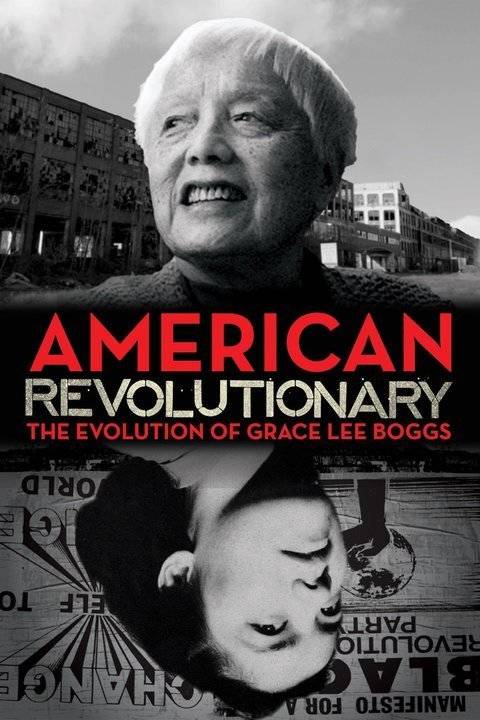 What they’re doing today, at the very moment when Grace herself is passing, is to join forces with the German emigré philosopher of New Work, Frithjof Bergmann, and more importantly, with the MIT-trained fab-lab promoter Blair Evans, as well as other local actors in the maker-space movement that is now gaining some strength in the city. Bergmann makes the existential quest for a meaning of life into an economic imperative that transforms what one can expect from work. This is a long-term idea that comes out of the collapse of heavy industry, and Bergmann has been developing his philosophy of New Work in the company of people from the devastated city of Flint, Michigan, since the early 1980s. Evans, for his part, is a black engineer-entrepreneur who wants to get things done, and who has fused the fab-lab concept of localized high-tech production with the practice of permaculture as a sustainable mode of food production and inhabitation. He wants to train people at the highest levels of contemporary technology, and at the same time, encourage them to realize that their efforts are better invested in work outside the capitalist circuit of exchange. What this amounts to is a form of “community production” that aims to bypass large corporations and global supply chains, not only in order to generate employment and place the most sophisticated tools back into the hands of the producers themselves, but also to set up situations where their production can be directly responsive to social and ecological needs. In such a context, the kinds of critique and the alternative proposals that are being offered both by radical academics and by community organizers can be directly effective on the ground. And just as importantly, both the academics and the community activists can go back to their own contexts and start changing them, in order to develop fundamental responses to the crisis of political ecology that now engulfs us all. To participate in that kind of initiative, and to use it as a lever for the transformation of education, is in my view the most important thing that an academic could do right now. I am not convinced that another research program or simple work of armchair theory can be so significant. Without material change and policies to match it, we are literally cooked. But artists, intellectuals and technologists can bring a lot to the grassroots processes of change.
What they’re doing today, at the very moment when Grace herself is passing, is to join forces with the German emigré philosopher of New Work, Frithjof Bergmann, and more importantly, with the MIT-trained fab-lab promoter Blair Evans, as well as other local actors in the maker-space movement that is now gaining some strength in the city. Bergmann makes the existential quest for a meaning of life into an economic imperative that transforms what one can expect from work. This is a long-term idea that comes out of the collapse of heavy industry, and Bergmann has been developing his philosophy of New Work in the company of people from the devastated city of Flint, Michigan, since the early 1980s. Evans, for his part, is a black engineer-entrepreneur who wants to get things done, and who has fused the fab-lab concept of localized high-tech production with the practice of permaculture as a sustainable mode of food production and inhabitation. He wants to train people at the highest levels of contemporary technology, and at the same time, encourage them to realize that their efforts are better invested in work outside the capitalist circuit of exchange. What this amounts to is a form of “community production” that aims to bypass large corporations and global supply chains, not only in order to generate employment and place the most sophisticated tools back into the hands of the producers themselves, but also to set up situations where their production can be directly responsive to social and ecological needs. In such a context, the kinds of critique and the alternative proposals that are being offered both by radical academics and by community organizers can be directly effective on the ground. And just as importantly, both the academics and the community activists can go back to their own contexts and start changing them, in order to develop fundamental responses to the crisis of political ecology that now engulfs us all. To participate in that kind of initiative, and to use it as a lever for the transformation of education, is in my view the most important thing that an academic could do right now. I am not convinced that another research program or simple work of armchair theory can be so significant. Without material change and policies to match it, we are literally cooked. But artists, intellectuals and technologists can bring a lot to the grassroots processes of change.
For some years now, you have been running a series of itinerant seminars called “Continental Drift.” Could you briefly introduce the project and explain how it came about? The seminars tend to take place in a particular context, outside of traditional academic institutions. What is your interest in these types of learning environments?
Continental Drift was a personal strategy that overcame its own bounds and became a multiple, transformed by its participants. I think the reason why it worked is because it emerged from a widely shared historical experience. I had been living in France since 1990. I’d seen the European Union take its present form, with the open borders and the single currency. In the US there was the North American Free Trade Agreement in 1995 – the basis for another kind of continental bloc. And it was increasingly clear that the East Asian countries had come to form a tightly integrated regional network. Above all, there was Latin America trying to gain new degrees of autonomy from the US. I had started to become aware of all these things through the research I did as part of the publications team for Documenta X in 1997, and soon after, in a more intense way, by working with politicized artists in the counter-globalization movement. Then the World Social Forum process began in Porto Alegre, Brazil, in the year 2000: a very extensive, transnational, cross-class effort to understand social change and respond to it. At the time, leftist intellectual circles were still talking in very abstract terms about globalization, or at best, about Hardt & Negri’s Empire. There was definitely something more intricate at stake, a concatenation of more specific social and technological forces, but it seemed that we couldn’t name it or feel it or grasp it in reality. How to find a common language to talk in detail about such vast transformations, where the complexity of science, technology, politics and economics seems to overwhelm the individual speaker? Walter Benjamin was already asking such questions in his essay “The Storyteller.” Like him, I believe that both art and thought begin with shockingly tangible things – and with narratives of contemporary experience.
In 2004 I received an invitation to go teach a workshop in a Swedish art school. At the time I was getting a lot of those requests, essentially because I was an activist. But the movement itself had begun to ebb, as all social movements do, and I realized that I was slipping without any real intention into the cultural circuit, moving randomly from place to place. It seemed as though the random journeys could be folded into a larger fabric, so as to recover a sense of both experimentation and purpose. So instead of just accepting that particular invitation, and continuing to accept the fragmented activity that such engagements typically imply, I decided to formulate a research-action program that could be modulated to fit different circumstances and partners and yet still retain some kind of internal coherency. The idea was to focus on this transnational economic process that seemed to be shifting the very ground beneath our feet. I came up with the title of “Continental Drift” and then wrote a short programmatic text called “Activist Research, From Geopolitics to Geopoetics,” which you can find in various books and on the web. I was hoping that the cultural circuit could produce dissident, oppositional culture, in a way that cuts transversally through different social milieus. Every trip would offer chances to elaborate this exploratory movement through particular encounters, whether with artists, activists or academics, or anyone else for that matter.
All that was already cooking when friends from the 16 Beaver Group, an artist collective from New York, broached the idea of doing some kind of seminar in their self-run space. So I said sure, let’s take up this idea of “Continental Drift” and use it to collectively analyze the transformations of society in the wake of 9/11 and the wars of imperial decline. We wanted to speak up publicly and politically, as intellectuals and artists, at a moment when that was just not happening in the United States. Claire Pentecost helped organize the seminars and a group of participants came from Chicago where I was already beginning to live intermittently. We had five iterations with 16 Beaver, usually for three or four days and at least once for a full week. I would give lectures, we would bring in occasional speakers such as David Harvey or Neil Smith, but we would also organize sessions where participants in groups of two would report on their own activist and/or artistic projects. There was a capacity to set your own agenda: a collective self-management of the inquiries and their expression. It turns out that New York City is a kind of stage on which all world events have a secondary representation: on any global issue you can always find someone who is intensely involved in distant events and often has some official or unofficial role as a spokesperson. So that helped us. We also discussed the book Empire quite a lot – after all, I was working with the journal Multitudes in France, which had formed around Toni Negri and other Italian political exiles living in Paris. And we talked about “the flexible personality,” which was my way of describing the social psychology of cognitive capitalism. However, what ultimately came out of our seminar in New York was a sense of five different scales of experience: the intimate, the territorial (whether rural or metropolitan), the national, the continental and the global. We explored the ways those five scales intersect, and the types of social unconscious that develop when their intersections are ignored or repressed. This was the more intricate approach, the way to make the abstractions concrete.
With 16 Beaver we also collaborated with the curatorial collective What, How and for Whom? and in late 2008 we took the seminar project to Zagreb for a week of dialogue devoted to continental transformations in the former East. In that case we included a whole urbanistic dimension, including a bus tour along with many presentations by people from the city. Our program also fed into a subsequent event organized by other allies, called “Operation City.” By that point the 16 Beaver Group had thoroughly incorporated this new way of operating through intensive seminars, which they have subsequently developed to a high degree of autonomy, particularly in the context of Occupy Wall Street. Meanwhile, though, something very different had happened earlier that summer in and around Chicago, through the confluence of different energies resulting in a ten-day “Continental Drift through the Midwest Radical Cultural Corridor.”
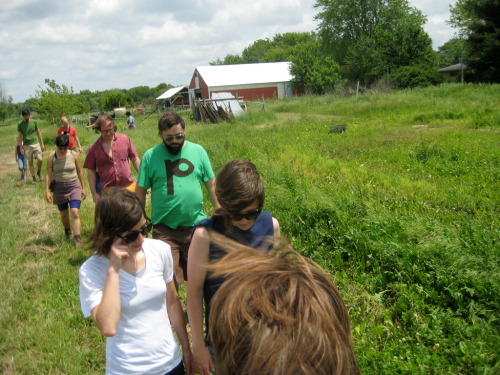 There we invented a territorial mobility, an experimental exercise of perception and expression. We’d stage events in a town or city, take walks, meet people, observe and interact, then get into a few cars, stop in rural places, stay with people or camp, and so on. The idea was to deliberately become an experimental assemblage for inquiry into spaces and scales. Looking back I can see that in the different situations there was always both a questioner and a narrator – fluid roles that would circulate between the group and the people that we were meeting. That’s what I mean when I say that Continental Drift became a multiple. It took on its own life and therefore started to change its own principles. On the inspiration of that first drift, the Compass group took form, with particular concepts and processes and agendas. Today we still work together, about ten people, there’s a website with lots of projects and documents, and we’re getting started on a more serious approach to political ecology. All this has quite a future – far beyond whatever I might have been thinking about in France in 2004.
There we invented a territorial mobility, an experimental exercise of perception and expression. We’d stage events in a town or city, take walks, meet people, observe and interact, then get into a few cars, stop in rural places, stay with people or camp, and so on. The idea was to deliberately become an experimental assemblage for inquiry into spaces and scales. Looking back I can see that in the different situations there was always both a questioner and a narrator – fluid roles that would circulate between the group and the people that we were meeting. That’s what I mean when I say that Continental Drift became a multiple. It took on its own life and therefore started to change its own principles. On the inspiration of that first drift, the Compass group took form, with particular concepts and processes and agendas. Today we still work together, about ten people, there’s a website with lots of projects and documents, and we’re getting started on a more serious approach to political ecology. All this has quite a future – far beyond whatever I might have been thinking about in France in 2004.
When discussing “Continental Drift” you referred to the intersection between different scales of experience, ranging from the geopolitical to the micropolitical. Could you expand on the way in which you try to address this intersection in the seminars? Do you employ certain strategies or methodologies?
The general aim is to let a group be traversed by its contexts. Insisting on the continuous interrelation of five different scales gets you away from the binary reductionism of a contrast between abstract globalism and subjective localism – which is a very common way of thinking. Instead, the idea is to start understanding the specific sites and mediations that constitute the real conditions of life in a complex society. Of course this becomes much more intense when you leave the seminar room and start to practice an attentive movement through geographical spaces, observing the infrastructures and trying to get some sense of the trajectories unfolding around you. With Compass we have done this quite a lot, with different groups and scenarios, trying to understand very concrete things like the way that grain is produced, valued on the Chicago derivatives markets and then shipped around the world (often according to US political imperatives). We tend to move very consciously through office buildings, city neighborhoods, small towns, riverine spaces, industrial ruins or huge open fields, and each time we do it as an intimate, intensive group exploring the multiplicity of our sensations and interpretations so as to enrich the overall understanding of any given situation, as well as our own capacity to express that situation artistically or intellectually. Depending on the project, the group changes, the roles of questioner and narrator circulate. At best, one gets the feeling of overcoming a kind of social unconsciousness, which frequently blocks out the continental and global scales. Or conversely, it blocks out the intimate scale, which is denied in the name of objective economic and political realities. So part of the technique is exploring these gaps in experience. I think it sometimes comes close to what Félix Guattari called “schizoanalysis.”
Claire Pentecost and I took this approach from Chicago to Argentina, where we collaborated in 2011 with the El Levante group in the city of Rosario, Argentina’s major grain-exporting port. We would spend days on site visits with various social projects and productive sectors, then bring a range of different people together for a roundtable discussion in the evening. The scale of their operations might be metropolitan, national, continental or global – and it was quite revealing for them to discuss how these issues of scale shaped their actions and their aims in ways very different from others operating at different scales. This was especially provocative because there are so many parallels between the way the grain trade works in the two cities, located on two different continents. There is a kind of doubled, split reality, which is typical of the globalized era. They talk about “Rosario, the Chicago of Argentina,” so we always said we were from “Chicago, the Rosario of the United States.”
Similarly, in the spring of 2014 Rozalinda Borcila and I launched a project called “Southwest Corridor/Northwest Passage.” We wanted to examine Chicago’s functions as an intermodal transport hub, articulating the global flows of just-in-time production and distribution. We began with a focus on the railways and the special economic zones radiating out from the port on Lake Michigan, in an attempt to grasp the technical organization of global supply chains linking North American consumers to the manufacturing centers of Asia. Then we added an historical dimension to our research, trying to understand how this massive trading zone had been installed in the local ecology from the period of colonization onwards, when all the early explorers were still looking for a Northwest Passage to the Orient. We did a lot of photographing and mapping, which we put up on the wall in a small exhibition called “Foreign Trade Zone.”
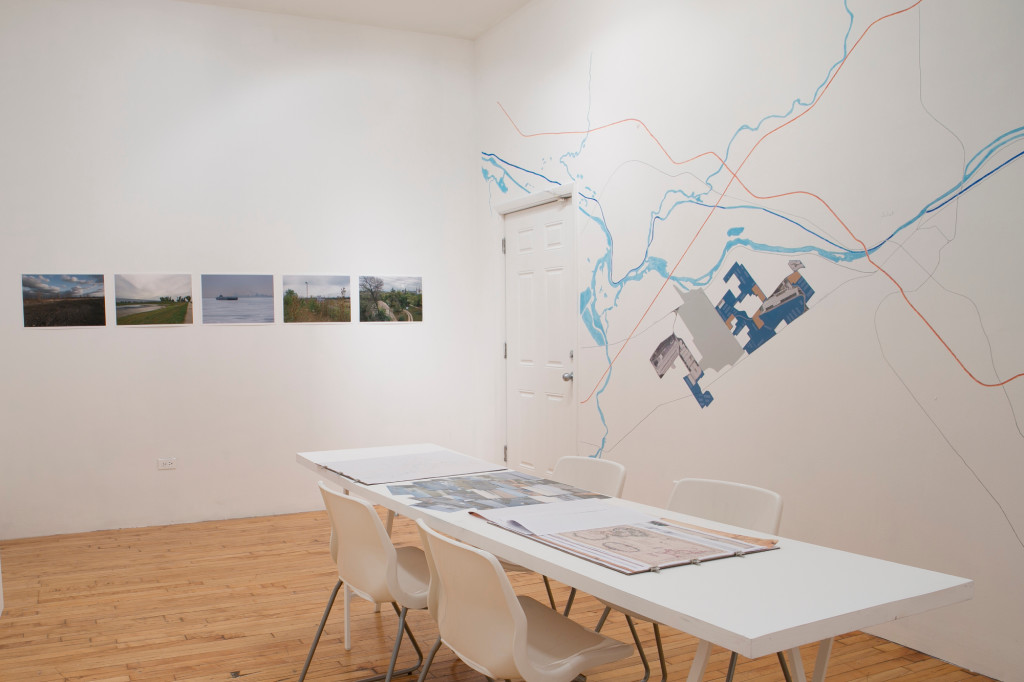 Then we started leading walks through space and time, generating mobile group discussions that helped people understand the ways that successive layers of infrastructure had changed the local ecology and patterns of inhabitation, while creating our everyday lives in the process. At that level it starts to get quite intense, you can feel the tragic nature of the present. Our main point was that along this old transportation corridor heading southwest out of the city, you can see with your own eyes the origins of the anthropogenic climate change that is now opening up the formerly frozen waters of the Northwest Passage.
Then we started leading walks through space and time, generating mobile group discussions that helped people understand the ways that successive layers of infrastructure had changed the local ecology and patterns of inhabitation, while creating our everyday lives in the process. At that level it starts to get quite intense, you can feel the tragic nature of the present. Our main point was that along this old transportation corridor heading southwest out of the city, you can see with your own eyes the origins of the anthropogenic climate change that is now opening up the formerly frozen waters of the Northwest Passage.
In Chicago, which is still home to some of the world’s great refineries and steel mills, you can come very close to the massive structures of the Anthropocene, and feel how they weigh on the world, to use a phrase from Michel Serres’ great book The Natural Contract. But you can also glimpse the residual wetlands that the city has consistently tried to erase – and so you get an insight into the land that the indigenous peoples lived on. In fact the wetlands always come back, quite tangibly and physically, if you learn to open your senses to their reality. This kind of collectively experienced and narrated walk through a known and yet still unfamiliar local area is a powerful aesthetic technique for overcoming some of the limits imposed on perception and behavior by the social unconscious.
What are for you the most important problems and limits confronted today by critical inquiry – and the project of “critique” in a more general sense? And could you explain how this is tied to your concept of the “extradisciplinary investigation”?
About ten years ago, Bruno Latour wrote a text called “Has Critique Run Out of Steam?” It was published in the journal Critical Inquiry in 2004. His basic contention was that the deconstructive, demystifying, debunking type of critique applied to lift the ideological cloak from supposed “matters of fact” ought now to be replaced by a constructive, combative, politicized critique that could be applied to the manifold aspects of what he calls “matters of concern.” In the post-9/11 context, in the face of a resurgent neoconservativism that was able to create governing illusions and deny climate change, Latour thought that society lacked an adequate critical perception of the very objects on which it was founded: objects, devices and dynamics that are inextricably technical, scientific, poetic, philosophical, ethical, spiritual and political. Worse yet, this missing form of critical perception and the constructive capacity to act on it were blocked by the ingrained rituals of generalized critical doubt for its own sake. When I read his piece it seemed spot on, but I could not see Latour himself taking any real steps to politicize the forms of his own inquiries. Now, with his series of Gifford lectures entitled “Facing Gaia,” I’m really convinced by his approach. The critique of modernity should be enacted, not as a refusal of what exists but as a process of intervention, directly at grips with the active components of a human ecology where the natural and the artificial are interwoven, to the point where the distinction between the two implodes. If we want to survive climate chaos and the forms of strife and civil war that are already accompanying it, we need to change the material fabrication and factibility (if you’ll accept an odd word) of the systems that we live by, in their inextricably technical, scientific, poetic, philosophical, ethical, spiritual and political dimensions. Facts are fabricated, for sure; but you can’t just debunk them and expect something to happen. What we need are activist ways of “making things public,” to use Latour’s phrase.
The notion of “extradisciplinary investigations” is one that I introduced in Multitudes #28 in 2007, under the influence of Critical Art Ensemble, the sociologist Ulrich Beck and Latour himself. The general idea was that any given discipline – such as art, for example – could only surmount the constitutive blindness attendant on its conceptual closure and professional instrumentalization by going beyond its own bounds, and investigating a burning issue by making use of highly specialized concepts and instruments developed by another discipline. Rather than simply transgressing, deconstructing or abandoning your own field, I thought, the most transformative thing to do is be to put it to the test of another one – particularly when that other field is the most proximate cause of the situation you want to investigate (as in, say, the relation between biology and GMO food production). The idea was that the initial discipline would inevitably bring some kind of effective critique to the other one, while being itself transformed in the process. And in effect, one can see this kind of spiral at work in a great many artistic projects, such as those being carried out by Trevor Paglen, Ursula Biemann, Lise Autogena and Joshua Portway, the Center for Land Use Interpretation, Mel Chin, Bureau d’Etudes, Critical Art Ensemble themselves, etc.
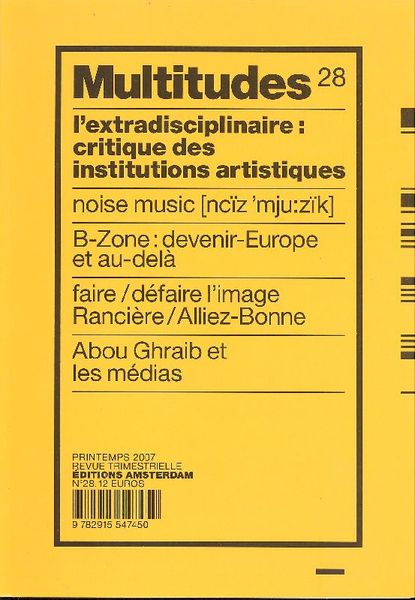 The first point to be made here is that the risks of Ulrich Beck’s “risk society” are generated by the functionally blind and politically or economically instrumentalized application of disciplinary knowledge to reality. And if we are talk about art as a discipline – which I think we should, in the era of the globalized art professional – then I want to stress that art itself generates another risk, which is that of being dazzled and bemused by the proliferation of distributed aesthetic effects, or what you might call the networked spectacle. But life is obviously a risky business. So the second point is to engage, by means of your own discipline, with the concretely existing complexity of the world as it is fabricated by other disciplines and their professional practitioners. The aim of this engagement is not just to add academic value through the arbitrary multiplication of discursive regimes, which in my view is just another pathway toward what the philosopher Cornelius Castoriadis called “the rise of insignificance.” Instead the aim is to engage in a kind of hands-on critique of the other discipline, to open up its black boxes and to place your own discipline at risk as well, by revealing the often insubstantial and indefensible nature of its internal conventions. Once again, the idea is to get a deeper, hopefully actionable understanding of how the world and oneself are made through knowledge/power relations, or more simply put, through the application of theory to practice. This is the only way to touch what Castoriadis calls “the radical imaginary,” which is at once the collective psychic orientation establishing the perception of things as they are, and the capacity to represent them as they are not – that is, to see the real possibility of another world.
The first point to be made here is that the risks of Ulrich Beck’s “risk society” are generated by the functionally blind and politically or economically instrumentalized application of disciplinary knowledge to reality. And if we are talk about art as a discipline – which I think we should, in the era of the globalized art professional – then I want to stress that art itself generates another risk, which is that of being dazzled and bemused by the proliferation of distributed aesthetic effects, or what you might call the networked spectacle. But life is obviously a risky business. So the second point is to engage, by means of your own discipline, with the concretely existing complexity of the world as it is fabricated by other disciplines and their professional practitioners. The aim of this engagement is not just to add academic value through the arbitrary multiplication of discursive regimes, which in my view is just another pathway toward what the philosopher Cornelius Castoriadis called “the rise of insignificance.” Instead the aim is to engage in a kind of hands-on critique of the other discipline, to open up its black boxes and to place your own discipline at risk as well, by revealing the often insubstantial and indefensible nature of its internal conventions. Once again, the idea is to get a deeper, hopefully actionable understanding of how the world and oneself are made through knowledge/power relations, or more simply put, through the application of theory to practice. This is the only way to touch what Castoriadis calls “the radical imaginary,” which is at once the collective psychic orientation establishing the perception of things as they are, and the capacity to represent them as they are not – that is, to see the real possibility of another world.
As you can see there is a kind of family resemblance between these extradisciplinary investigations and the practice of continental drifting that I was talking about before. To paraphrase one of Freud’s remarks about the relation between dream and sleep, one might say that the continuity of disciplinary closure is the guardian of the social unconscious. It’s what keeps the boxes black, unusable and even unknowable by common people, impenetrable to any kind of democratic assessment of their functioning and their consequences.
Given your experience with collective self-management and self-organized education, it would be interesting to hear your thoughts about some of the limits or pitfalls of these forms of practice, as distinct from those located within the university?
Well, let’s face it: the university is a well-oiled motivational machine, it is very good at mobilizing peoples’ energies and articulating their outputs. Expecting people to do the same things even more intensely on their free time, as I do, is often a recipe for disappointment. It only works among a committed few, or in the wake of some crisis that throws everything into doubt and disarray. That’s why, over the years, I have been so interested in the great political and economic crises, and it’s why I always attempt to do something that can be broadly shared in relation to those kinds of events, which shake peoples’ foundations and denormalize their relations to the world. An example is the seminar “Three Crises: 30’s–70’s–Now,” which was carried out in Chicago in the fall of 2011 at a now-vanished space called Mess Hall. It was very collaborative, quite successful in its way, but also quite small and obscure. The crisis itself is what amplifies such efforts. I took that seminar to Berlin, with the Occupy movement there, and then later to the Campus Expandido program of the contemporary art museum at my favorite university, the UNAM in Mexico City. I think the sustained attention and focus of the university is essential to these kinds of inquiries, but so is the outside space and the transversal movement between them. The programmatic text for that seminar – quite a long and detailed one, called “Crisis Theory for Complex Societies” – was published a couple of times in English and translated into Spanish. Now I’m doing a new version of this research in Denmark at the invitation of Bonnie Fortune, who used to live in the Midwest and work with Compass.
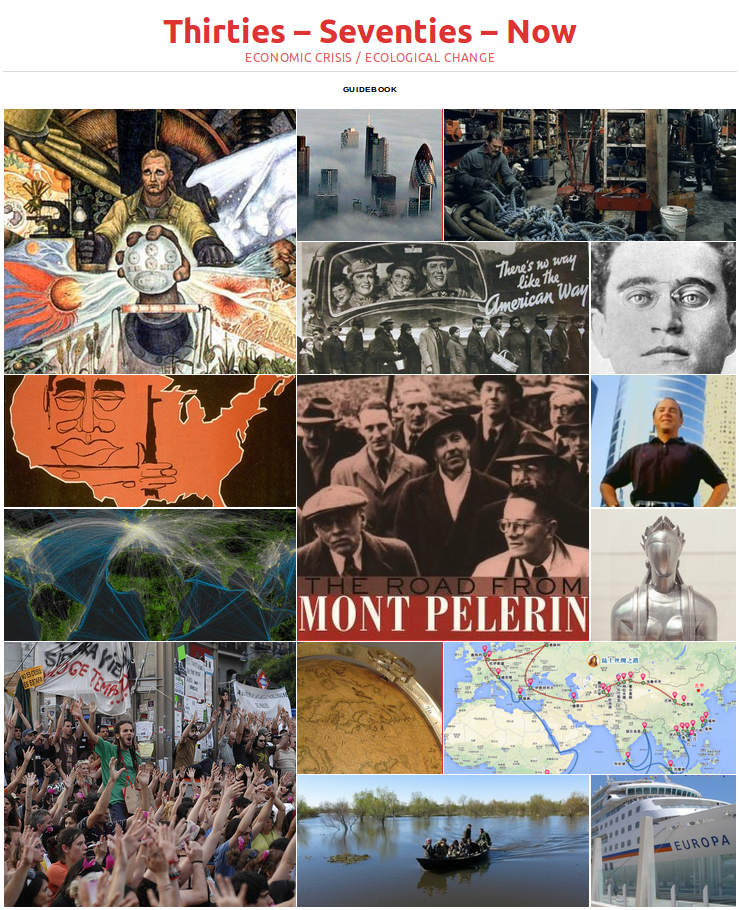 Having observed the dynamics of crisis both in my own lifetime and in the history of capitalism, I finally produced a theory of change in complex societies, which is developed in the texts “Eventwork” and “Activism/Schizoanalysis.” This theory takes up some of Guattari’s ideas from the book Schizoanalytic Cartographies, where he talks about four different fields or varieties of experience, corresponding roughly to aesthetic impulses, existential territories, forms of mediated social organization, and finally, rhizomatic ideas. Typically these are separate realms of experience, divided and held apart by the schiz or internal split of capitalist alienation; and to that extent, the four fields are conceived as varieties of the unconscious. However, what I observe is that at certain moments of crisis they flow through each other, on both the psychic and societal levels. Changes in each domain catalyze transformations in the others, to the point where they all began acting together as a generative matrix. In a complex society, it takes this mix of art, territorial experience, organizational form and theoretical insight to produce events, that is to say, moments of heightened reflexivity and transgressive action that go beyond the usual limits. Any social movement, in my view, is a complex process of eventwork, where the sum of all the parts is a dynamic break, a rupture of the usual repressive totality to which Adorno referred with the famous phrase, “the whole is the untrue.” So from this outlook, the schiz, or the breakdown of the false totality, is a positive chance for social change. At such a moment, the university, the museum and the media do not simply burst out into the streets – but all these separate domains flow through and transform each other, overcoming many of the usual limits.
Having observed the dynamics of crisis both in my own lifetime and in the history of capitalism, I finally produced a theory of change in complex societies, which is developed in the texts “Eventwork” and “Activism/Schizoanalysis.” This theory takes up some of Guattari’s ideas from the book Schizoanalytic Cartographies, where he talks about four different fields or varieties of experience, corresponding roughly to aesthetic impulses, existential territories, forms of mediated social organization, and finally, rhizomatic ideas. Typically these are separate realms of experience, divided and held apart by the schiz or internal split of capitalist alienation; and to that extent, the four fields are conceived as varieties of the unconscious. However, what I observe is that at certain moments of crisis they flow through each other, on both the psychic and societal levels. Changes in each domain catalyze transformations in the others, to the point where they all began acting together as a generative matrix. In a complex society, it takes this mix of art, territorial experience, organizational form and theoretical insight to produce events, that is to say, moments of heightened reflexivity and transgressive action that go beyond the usual limits. Any social movement, in my view, is a complex process of eventwork, where the sum of all the parts is a dynamic break, a rupture of the usual repressive totality to which Adorno referred with the famous phrase, “the whole is the untrue.” So from this outlook, the schiz, or the breakdown of the false totality, is a positive chance for social change. At such a moment, the university, the museum and the media do not simply burst out into the streets – but all these separate domains flow through and transform each other, overcoming many of the usual limits.
My friend the art theorist Stephen Wright has criticized this idea, saying that it is too exceptionalist, that it relies on a privileged, masculinist subject of violent rupture and therefore ignores the slower and more crucial transformations of daily life. On the one hand I can’t accept that critique, not if it denies the importance of something like the world revolution of 1968, or the networked counter-globalization movements or the more recent insurgence of Occupy (which itself, of course, tried very deliberately to be about inhabitation). I still think those kinds of breaks in the status quo are crucial: they are the only really powerful ways for grassroots actors to enter the mediated space of politics in the control societies. What’s more, they tend to lie at the origins of most of what one might think of as alternative culture – and those alternatives matter. On the other hand, though, there is something great about Stephen’s criticism that interests me very much, particularly now when social movements seem to be at a standstill, or perhaps in the grip of a programmed paralysis. What happens when you turn away from the controlled drama of the streets? What could eventwork possibly mean for the rhythms of day-to-day existence?
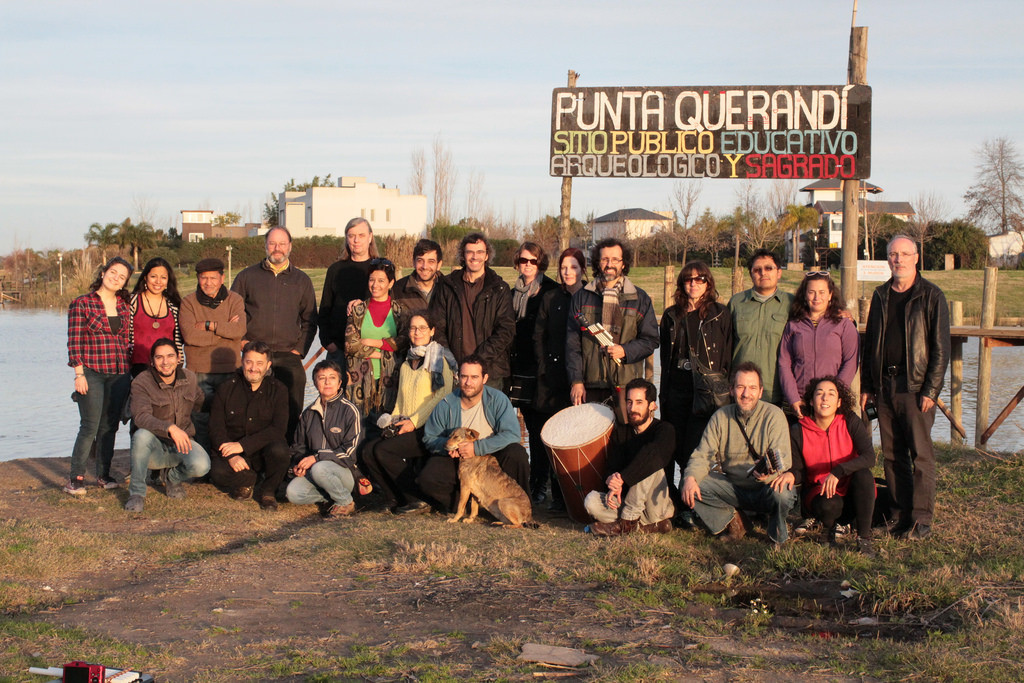 Last summer I again went traveling in Argentina, at the generous invitation of Critical Art Ensemble. There we collaborated with the activist art group Ala Plástica, which is formed by Alejandro Meitin and Silvina Babich and their many collaborators. For the last twenty-five years they have been extending their fields of inquiry, expression and action ever further up into the Paraná river basin and wetlands system, which runs through Argentina, Paraguay, Bolivia and Brazil. Ala Plástica’s bioregional art and activism dovetails perfectly with the work of Sarah Lewison of the Compass group, who came with us on the trip and who had also been an important collaborator in “Southwest Corridor/Northwest Passage.” In this work with watersheds, the long, slow, continuous, sometimes violent and most often tranquil “event” is the river itself, whose waters embrace one very intimately, but also extend to continental scale.
Last summer I again went traveling in Argentina, at the generous invitation of Critical Art Ensemble. There we collaborated with the activist art group Ala Plástica, which is formed by Alejandro Meitin and Silvina Babich and their many collaborators. For the last twenty-five years they have been extending their fields of inquiry, expression and action ever further up into the Paraná river basin and wetlands system, which runs through Argentina, Paraguay, Bolivia and Brazil. Ala Plástica’s bioregional art and activism dovetails perfectly with the work of Sarah Lewison of the Compass group, who came with us on the trip and who had also been an important collaborator in “Southwest Corridor/Northwest Passage.” In this work with watersheds, the long, slow, continuous, sometimes violent and most often tranquil “event” is the river itself, whose waters embrace one very intimately, but also extend to continental scale.
I have come to think that a watershed like that of the Paraná – or the Mississippi river basin in the Midwest – is a perfect place to grasp the great political enigma of the present, which is climate change and our inability to do anything except intensify it. The idea this time is not to transgress any limit at all, but instead to get to know an ecosystem and to accept that one is intimately part of its changes. That can’t be done through any specific, deliberate action, but only over time, by cultivating a deep sensibility and a large number of relations between human beings and the living landscape. For the capitalizing consciousness fixated on instruments, endpoints and distant horizons, the ecological experience is a circular journey of transformation and metamorphosis that unfurls in slow recursive cycles. There may be plenty of art, research or activism along the way, but every singular gesture or seemingly decisive break – even the vast increase in greenhouse gases set off by neoliberal globalism – can only lead deeper into the continuous processes revealed by the water’s flow. This bioregional approach opens up a very different style of inquiry and activity, undoubtedly the most important one for those who want to live within the limits that ecologists call “the planetary boundaries.”